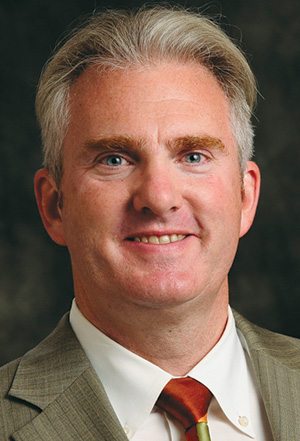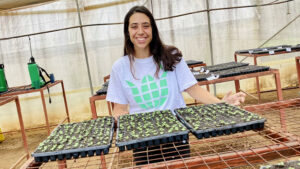An ‘accidental’ first generation Kansas farmer talks about starting from scratch.

Seed World: How did you get your start in farming?
Scott Thellman: I am an accidental first generation farmer! After high school, I bought a sickle bar mower, old square baler and bar rake and grew from there, year after year. A neighbor talked me into applying for an EQIP grant, which paid for the construction of a high-tower to begin producing organic vegetables… and that was the beginning of the produce business.
SW: What directed you to organic vegetable production?
ST: We initially went the organic route because of restrictions on the Organic EQIP grant I received. We stayed organic after seeing the market demand for certain local food products in the organic sector. Not all of our vegetables are certified organic, but we frequently use organic products and practices in both our organic and conventional production fields to be as environmentally friendly and sustainable as possible.
SW: What do you think is the biggest misconception about vegetable production?
ST: There’s actually two — many think that there is a ton of money in vegetable production and the second is the misconception that there is unlimited demand for purchasing local vegetables. Vegetable production takes a carefully crafted marketing strategy. I always say; it’s easy to grow an acre of kale, but to harvest, wash, pack, market, and ship …that’s another story!
SW: What is the greatest challenge facing vegetable producers?
ST: Infrastructure! It is easy in the Midwest to be a corn farmer: once you harvest your crop, all you have to do is truck it to your local grain elevator and sell it. No questions asked. With vegetables it is a different world. You have to pick your crop, transport it to the farm, wash it, sort it, pack it, store it in cold storage, market it, load it onto the delivery vehicle, deliver it, invoice it, and then wait for payment. It is a long process that does not create a great market (if any) for seconds and culls. When each individual farm has to invest in their own packhouse, cold storage and delivery vehicles, it makes the process much more expensive and creates challenges in becoming an economically sustainable operation.
SW: Do you feel that being a young, first-generation producer is more challenging than, say, a young farmer returning to an operation? How have you overcome these challenges?
ST:Absolutely, there are a lot of challenges. As a young grower you lack access to capital, infrastructure, good labor, markets, and social networks. You have to get out of your bubble if you want to be a successful young farmer. You need to network your way into long lasting mutually beneficial relationships that only strengthen as time goes on, and you need to find other farmers and professionals who want to see you succeed.











